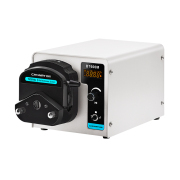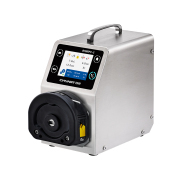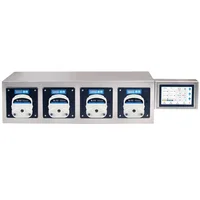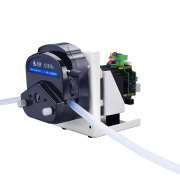Chonry Peristaltic Pump
Peristaltic Pumps
Peristaltic Pumps
Peristaltic pumps are positive displacement pumps that work by discharging fluid through a flexible tube in a circular pump casing. Depending on the model, peristaltic pumps can either pump a high-pressure gas or a very thin liquid. Most peristaltic pumps operate with rotary motion, but some also use centrifugal action.
Peristaltic pumps are often used in labs for dispensing buffer solutions and culture media. They are ideal for dispensing such fluids with high accuracy and minimal contamination. Moreover, they offer high pressure and flow rates, making them an ideal choice for a range of applications. They are able to handle high pressures of up to 10 bars.
Peristaltic pumps can be classified into two types: fixed occlusion pumps and variable occlusion pumps. Fixed occlusion pumps have one fixed occlusion percentage, and variable occlusion pumps have different proportions of occlusion. The occlusion percentage depends on the thickness of the tube wall, so a higher percentage means more wear on the pump tube.
Depending on the application, a peristaltic pump needs to be configured to achieve the desired flow rate. The drive can be simple or fully automated, depending on the needs of the user. A peristaltic pump's pump head should be compatible with the media it is intended to dispense. There are several different types of peristaltic pump heads, so make sure to select the right one for the application you need it for.
A peristaltic pump is relatively easy to maintain. Because the flexible tube is the only part that wears out, it is reversible and easy to replace. Most pumps come with durable tubes, making it easy to replace them without taking apart the pump. This means that you won't have to worry about repairing a leaky hose.
A peristaltic pump can be used in a wide variety of settings, ranging from lab applications to the pharmaceutical industry. They're also widely used in sewage systems and mining. They can also be used for pumping highly solid materials. The versatility of a peristaltic pump makes them the perfect choice for a variety of situations.
A peristaltic pump can handle various fluids, including abrasive slurries and chemicals. It can also handle materials with sharp particles. The pump's durable tubing can withstand pressures of up to 55,000 cPs. Another great benefit of this pump is its low maintenance. A peristaltic pump's hose is not prone to clogging. And because it does not use valves, its maintenance is minimal.
Peristaltic pumps are easy to set up and use. When you buy a peristaltic pump, make sure the hoses are made from a specific material. This ensures that the pump can handle specific fluids and applications.
0users like this.







